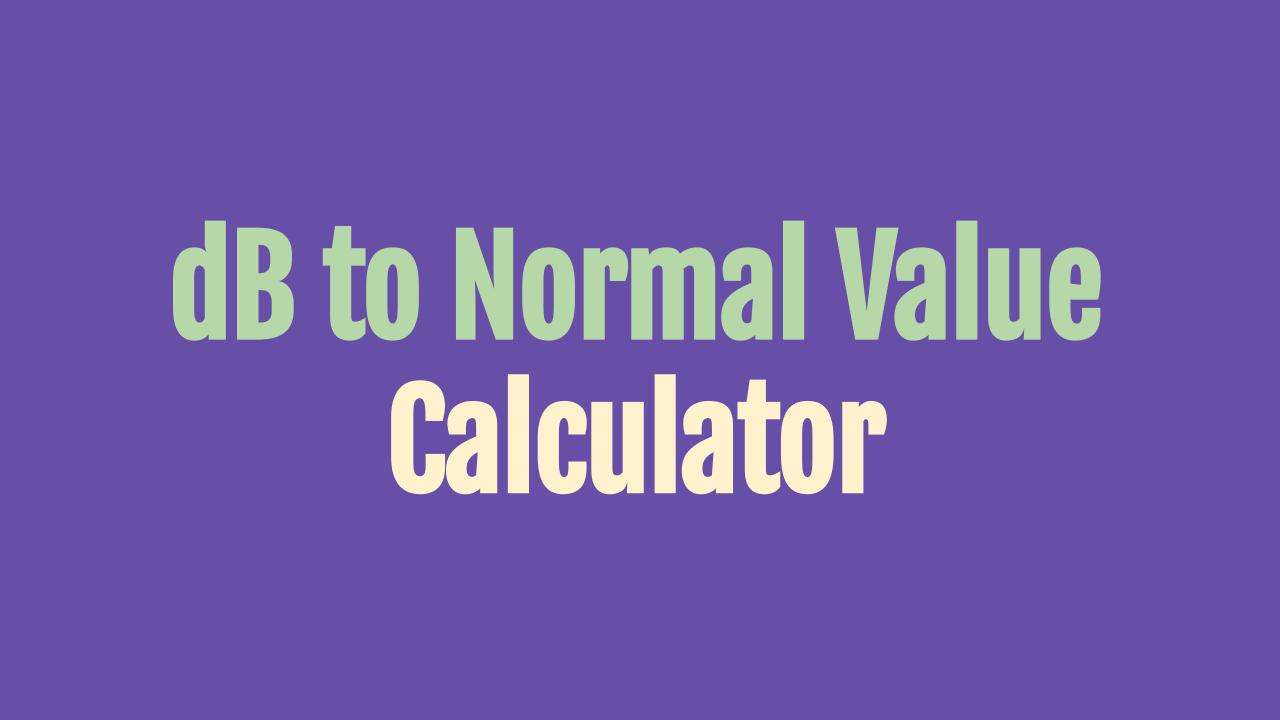This tool converts a deciBel (dB) value to its equivalent normal or linear value.
Enter the dB value
Formula
PdB = 10*Log10(P1/P2)
PdB = 20*Log10(V1/V2)
and therefore the normal values for the Power and Voltage ratios
P1/P2 = 10(PdB/10)
V1/V2 = 10(PdB/20)
Example Calculations
- 10 dB gives a power ratio of 10 and a voltage ratio of 3.162.
- -10 dB gives a power ratio of 0.1 and a voltage ratio of 0.3162.
Note that negative dB values have a higher voltage ratio value than power ratio. The reverse is true for positive dB values.
Background
A dB to normal value calculator is a tool that converts decibels (dB), a logarithmic measure, into linear values (normal values). Decibels are commonly used in fields like sound engineering, telecommunications, and electronics to measure signal strength, power, or sound intensity. However, since decibels use a logarithmic scale, converting them to linear (normal) values requires calculations that are not always straightforward. This calculator makes the process quick and easy.
Practical Applications
- Audio Engineering: To convert decibel sound levels to actual sound pressure levels (SPL).
- RF Engineering: To understand signal strengths in communications systems.
- Electronics: To convert amplifier gain or signal loss from dB into actual power or voltage values.
- Data Analysis: To simplify the interpretation of dB values in scientific experiments.
Summary
This simple calculator helps convert dB values into normal linear power ratios and voltage or current ratios, making it easier to understand and apply these measurements in various practical scenarios.
